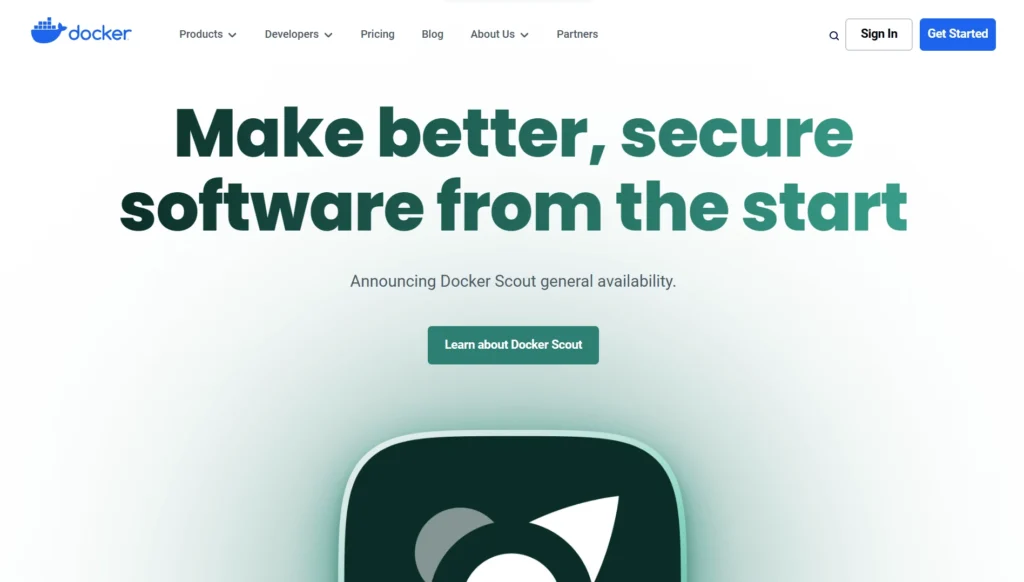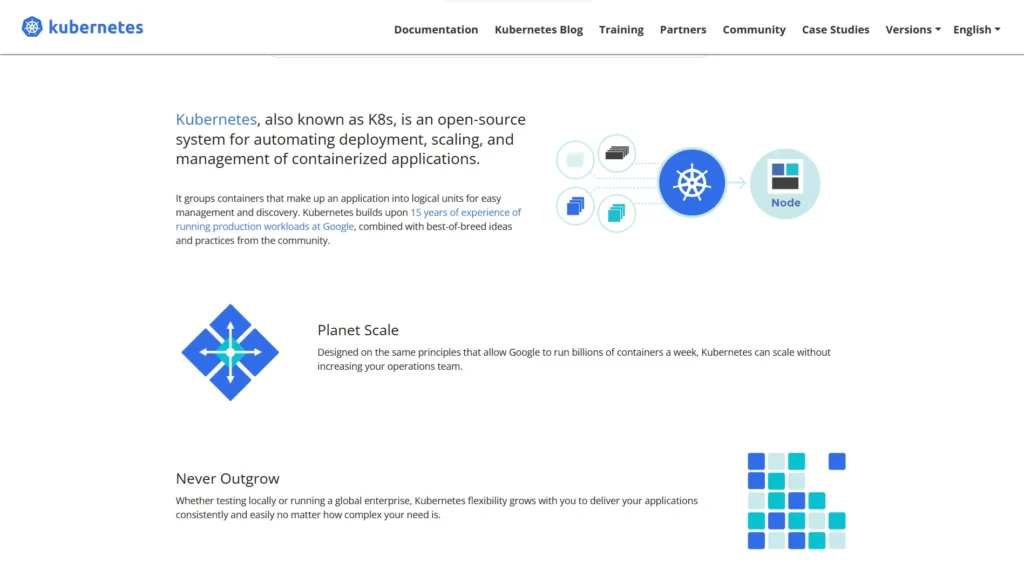In full-stack web development, the speed and efficiency of your deployment process can make all the difference.
As aspiring full-stack web developers, understanding and implementing Continuous Integration and Continuous Deployment (CI/CD) strategies becomes paramount.
CI/CD isn’t just a buzzword; it’s a methodology that can significantly enhance your development lifecycle.
In this article, we’ll explore five practical strategies tailored for faster full-stack web development deployment.
Whether you’re diving into front-end design or wrangling server-side logic, these strategies will empower you to streamline your deployment process and deliver applications with agility.
Quick Links
Understanding CI/CD in Full-Stack Web Development
Continuous Integration and Continuous Deployment (CI/CD) serve as the backbone of modern software development, promoting collaboration, code quality, and rapid delivery.
As an aspiring full-stack web developer, grasping the essence of CI/CD is pivotal.
At its core, CI/CD involves the seamless integration of code changes and the automated deployment of those changes to production.
This not only accelerates the development cycle but also minimizes errors and enhances overall project reliability.
Benefits for Aspiring Full-Stack Web Developers:
- Efficiency Boost: CI/CD reduces manual intervention, allowing you to focus on coding rather than managing deployments.
- Early Bug Detection: Automated testing as part of CI/CD pipelines catches bugs early in the development process, preventing them from reaching production.
Now, let’s explore into the practical strategies that will transform your full-stack web development deployment process.
Strategy 1: Automated Testing Integration
Automated testing is a cornerstone of CI/CD, ensuring that changes introduced to your codebase don’t inadvertently break existing functionality.
As an aspiring full-stack web developer, incorporating automated testing into your workflow can be a game-changer.
Practical Steps:
- Test Suites: Create comprehensive test suites covering different aspects of your application, including unit tests for individual components, integration tests for combined functionality, and end-to-end tests for overall system validation.
// Example Unit Test
test('Should add two numbers correctly', () => {
expect(add(2, 3)).toBe(5);
});
- Continuous Integration Hooks: Integrate your test suites into your CI/CD pipeline. This ensures that every code commit triggers automated tests, providing rapid feedback on the health of your codebase.
# Example CI/CD Configuration (using GitHub Actions)
on:
push:
branches:
- main
jobs:
test:
runs-on: ubuntu-latest
steps:
- name: Checkout Repository
uses: actions/checkout@v2
- name: Run Tests
run: npm test
Benefits:
- Quality Assurance: Automated testing guarantees that your code meets predefined quality standards, reducing the likelihood of introducing bugs into your application.
- Time Efficiency: Catching and fixing issues early in the development process saves time and resources compared to addressing them in a later stage.
By integrating automated testing into your workflow, you lay the foundation for a robust and error-resistant full-stack web application.
Strategy 2: Version Control Best Practices
Version control is the backbone of collaborative development, allowing multiple developers to work on a project simultaneously while maintaining a coherent codebase.
For aspiring full-stack web developers, adopting version control best practices is crucial for efficient CI/CD workflows.
Best Practices:
- Branching Strategy: Implement a branching strategy that aligns with your development process. For instance, using feature branches for new features and bug branches for issue fixes keeps your codebase organized.
# Example Branching
git checkout -b feature/new-feature
- Commit Messages: Craft meaningful and concise commit messages. Clearly communicate the purpose of each commit, making it easier for collaborators (and future you) to understand the evolution of the codebase.
# Example Commit Message
git commit -m "Add login functionality for improved user authentication."
Benefits:
- Collaborative Efficiency: Version control facilitates seamless collaboration among developers, preventing conflicts and ensuring a smooth integration of changes.
- Code Consistency: Following best practices for version control results in a more consistent and maintainable codebase over time.
Incorporating these version control best practices ensures that your full-stack web development projects are not only collaborative but also well-organized.
Strategy 3: Containerization for Seamless Deployment
Containerization, exemplified by tools like Docker, has revolutionized the deployment landscape by encapsulating applications and their dependencies.

As an aspiring full-stack web developer, leveraging containerization can simplify deployment processes and enhance consistency across different environments.
Practical Steps:
- Dockerfile Creation: Craft a Dockerfile to define the environment and dependencies needed for your application. This encapsulates your app into a container, ensuring it runs consistently across different systems.
# Example Dockerfile
FROM node:14
WORKDIR /app
COPY package*.json ./
RUN npm install
COPY . .
CMD ["npm", "start"]
- Container Orchestration: Explore container orchestration tools like Kubernetes for managing, scaling, and automating the deployment of containerized applications.
# Example Kubernetes Deployment
apiVersion: apps/v1
kind: Deployment
metadata:
name: my-app
spec:
replicas: 3
selector:
matchLabels:
app: my-app
template:
metadata:
labels:
app: my-app
spec:
containers:
- name: my-app
image: my-app:latest
Benefits:
- Consistency Across Environments: Containers encapsulate everything needed for an application, ensuring consistent behavior from development to production.
- Isolation: Containers isolate your application and its dependencies, minimizing conflicts and making it easier to manage dependencies.

By embracing containerization, you pave the way for a more seamless and predictable deployment process in your full-stack web development journey.
The next strategy delves into parallelizing and concurrent builds for enhanced development speed.
Strategy 4: Parallelizing and Concurrent Builds
Speeding up your development workflow involves more than just efficient coding; it requires optimizing the build process.
Parallelizing and concurrent builds are strategies that enable faster feedback loops, crucial for aspiring full-stack web developers aiming for swift and efficient deployment.
Concept Exploration:
- Parallelizing Builds: Break down your build process into parallelizable tasks. For example, if your application has both front-end and back-end components, parallelize the build for each, reducing overall compilation time.
# Example Parallel Build (using npm-run-all)
npm-run-all --parallel build:frontend build:backend
- Concurrent Builds: Explore tools that facilitate concurrent execution of tasks. This is particularly beneficial when dealing with multiple projects or microservices that can be built concurrently.
# Example Concurrent Build (using Makefile)
all: frontend backend
frontend:
cd frontend && npm install && npm run build
backend:
cd backend && npm install && npm run build
Implementation Tips:
- Build Automation Tools: Leverage build automation tools such as Make, npm scripts, or Gradle to orchestrate and automate the parallelization and concurrency of your builds.
- Dependency Caching: Implement caching mechanisms for dependencies to avoid redundant installations, further accelerating the build process.
Benefits:
- Reduced Build Times: Parallelizing and concurrently executing builds significantly decrease the time required to compile and prepare your application for deployment.
- Efficient Resource Utilization: By utilizing multiple resources simultaneously, you optimize your development environment’s efficiency.
By implementing these strategies, you enhance the speed of your full-stack web development deployment pipeline, allowing for faster iterations and more agile development.
The next strategy explores the importance of continuous monitoring and feedback loops in the CI/CD process.
Strategy 5: Continuous Monitoring and Feedback Loops
The journey to faster and more efficient full-stack web development doesn’t end with successful deployment.
Continuous Monitoring and Feedback Loops play a crucial role in maintaining and improving your application over time.
Significance of Continuous Monitoring:
- Real-Time Insights: Implement tools for continuous monitoring to gain real-time insights into the performance and behavior of your deployed application.
# Example Monitoring Configuration (using Prometheus)
apiVersion: monitoring.coreos.com/v1
kind: ServiceMonitor
metadata:
name: my-app
spec:
selector:
matchLabels:
app: my-app
endpoints:
- port: web
- Issue Detection: Set up alerts and notifications to be instantly informed of any issues or anomalies in your application’s performance.
# Example Alerting Rule (using Prometheus Alertmanager)
groups:
- name: my-app-rules
rules:
- alert: HighErrorRate
expr: job:my-app_http_errors:rate5m > 0.5
for: 5m
annotations:
summary: "High error rate detected"
Implementation of Feedback Loops:
- Automated Testing Feedback: Integrate automated testing results into your feedback loop, ensuring that every code change undergoes scrutiny.
- User Feedback Channels: Establish channels for user feedback, such as bug reporting mechanisms and user surveys, to gather insights for continuous improvement.
Benefits:
- Proactive Issue Resolution: Continuous monitoring allows you to identify and address issues before they impact the user experience.
- Data-Driven Optimization: Insights gathered through monitoring and feedback loops provide a data-driven approach to optimizing application performance and user satisfaction.
By incorporating continuous monitoring and feedback loops into your CI/CD pipeline, you not only ensure the stability of your deployed applications but also create a foundation for iterative enhancements and continuous improvement.
Conclusion
The integration of Continuous Integration and Continuous Deployment (CI/CD) strategies serves as a beacon for aspiring developers navigating the complexities of efficient deployment.
We’ve explored five practical strategies designed to accelerate the full-stack web development deployment process.
- Automated Testing Integration: Lay the groundwork for robust applications by incorporating comprehensive automated testing into your workflow. Early bug detection and improved code quality await those who embrace this strategy.
- Version Control Best Practices: Efficient branching and meaningful commit messages ensure a smooth and organized code evolution.
- Containerization for Seamless Deployment: Dive into the world of containerization with tools like Docker, ensuring consistency across different environments and simplifying deployment processes.
- Parallelizing and Concurrent Builds: Optimize your development speed by parallelizing and concurrently executing builds. Efficient resource utilization and reduced build times are the rewards of this strategy.
- Continuous Monitoring and Feedback Loops: Extend your journey beyond deployment with continuous monitoring and feedback loops. Proactively address issues, gather real-time insights, and create a foundation for iterative improvements.
As an aspiring full-stack web developer, these strategies not only enhance the efficiency of your deployment process but also instill a mindset of continuous improvement. T
he path to faster and more effective web development is illuminated by the principles of CI/CD, guiding you towards a future where your applications evolve seamlessly and deliver unparalleled user experiences.
Embrace these strategies, refine your deployment pipeline, and watch your full-stack development journey flourish.
Leave a Reply